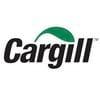Value `Gut Health´ to help raise profits
Published: June 24, 2022
Source : Rossari Biotech Ltd.
The aspects that are focused to increase profitability in poultry sector are feed and gut among which gut is the key feature. Gut health and functionality plays a key role on nutrition absorption, feed efficiency, productivity, development of immunity and overall health of birds.
The gut health relies upon 3 important pillars which are:

There is an intricate relationship among all 3 pillars and the main aim is the optimization of Gut health to ensure better digestion, assimilation and absorption of nutrients thus ensuring better performance.
In gut the feed is one of the major sources of external allergens which enter the GIT and If not taken care would lead to low grade inflammatory reactions leading to nutrient loss. This feed is is digested and converted into energy sources which can be absorbed and transported across the gut epithelium. The microflora that resides in gut plays a major role in digestion, fermentation and metabolic conversions. The epithelial cell layer of the gut is the frontline between the luminal content and the underlying cells of the mucosal immune system. The mucosal layers of the gut are associated with the largest number of immune cells in the body. This barrier selectively permits the entry of nutrients while denying entry of harmful antigens and pathogens. Intestinal epithelial cells constantly monitor the antigen content of the gut and communicate with the underlying immune cells. Feed and intestinal microbes have a strong impact on it. These complex interactions direct the development of a balanced intestinal system that avoids excessive inflammatory responses to antigens and commensal bacteria while retaining the ability to defend the body against pathogenic microorganisms. Microflora of gut comprises of lactic acid bacteria (55%), rods (44%) and pathogens (~1%) but they often get altered. The changes in the composition of the microflora have either beneficial or detrimental effects on health, growth, and maturation, so it’s essential to maintain healthy intestinal microflora.
There are various factors that affect gut health of poultry which can be categorised as:

Infectious causes include disease causing organisms like coccidiosis, E. coli, Salmonella, Tapeworms, Roundworms, Viruses and other pathogenic organisms. Necrotic Enteritis and Coccidiosis tend to be most detrimental and can erode profits for broiler producers up to $0.10 (USD) per bird.
Non-infectious include feed and managemental aspects. The structure and feed quality, palatability, formulation, mycotoxins content and in feed type decides the fate of gut health. Similarly, available feed space, water space, distribution of feeders, drinkers, air quality, ventilation, litter, temperature, density and other managemental aspects not only govern the stress level in bird but also determines their gut integrity. Proper control over these factors can only maintain all the pillars of gut health and increase the profit rates. The increase in feed prices and managemental costs have affected the ability of poultry enthusiasts to maintain the gut health and thus the profit, but the pharma companies working in this arena have introduced various components which work on gut problem causing aspects including introduction of unconventional feed stuff and maintains the gut health.
The solutions currently aimed at improving the Gut health are:
Antibiotic Growth Promoters (AGPs) have been globally used in poultry for 60 years and are known to improve feed conversion and growth while reducing disease incidences. Recently due to development of antimicrobial resistance their use has been drastically reduced and European Union banned them. The ban has led to adoption of natural antibiotic alternatives which have same effect as AGPs but has no resistance issue.
Probiotics are live microbial feed supplements which in poultry improve health, production, exclude pathogenic bacteria, maintains integrity of epithelial barrier, nutrient transfer and enhances enteric immunity. The ideal probiotic is non-pathogenic, acidic pH resistant is able to produce antimicrobial compounds, improve commensal bacteria growth, modulate immune response, improve animal performance and withstand feed processing conditions. Common probiotics used in poultry are Bacillus subtilis, Bifidobacterium and Lactobacillus spp.
Prebiotic is a component that influences growth and metabolic activity of useful bacteria in the intestine of birds through selective stimulation. Prebiotics are often used in combination with probiotics to get the maximum advantage. Lactobacilli and Bifidobacteria spp. ferment prebiotics into short chain fatty acids, which increase their concentrations, reduces enteric pH and inhibit the proliferation of certain pathogenic bacteria. Ideal prebiotic should not be hydrolysed or absorbed, selectively enrich one or more beneficial bacteria of gut. The most common prebiotics used in poultry are oligosaccharides, including inulin, fructooligosaccharides (FOS), mannanoligosaccharides (MOS), galactooligosaccharides (GOS), soya-oligosaccharides (SOS), xylo-oligosaccharides (XOS), pyrodextrins, isomaltooligosaccharides (IMO) and lactulose.
Organic acids such as lactic, acetic, tannic, fumaric, propionic, formic, citric, benzoic and butyric acids, etc., have been shown to exhibit beneficial effects on the intestinal health and performance of birds as they improve body weight gains and feed conversion ratio. Organic acids also tend to modify enteric bacterial population, so it is recommended along with probiotics and prebiotics.
Enzymes are quite important supplements for poultry feed as it contains corn and soya which have some anti-nutritional factors that decreases the nutrient availability in feed and increases production cost. With increase in prices of conventional feed stuff, there is a tendency to use non-conventional feed raw materials which are known to have different kind of anti-nutritional factors in various amounts, this practice requires the supplementation of enzymes in feed. Enzyme supplementation increases nutrient digestion, absorption as it modulates the intestinal microbiota while reducing the pollutants in excreta.
Essential oils have been reported to impart beneficial effects on intestinal integrity, the gut environment and microflora through their biologically active components positively effecting feed intake, digestive secretions, immunostimulant, antibacterial, antiviral, coccidiostat, anthelmintic or anti-inflammatory effects and antioxidant effects.
Toxin Binders are an important part of poultry feed. As poultry feed always contains different levels of mycotoxins which have deleterious effect on birds’ health and performance. Several mycotoxin binders have been developed that prevent the toxic effects of mycotoxins which binds with the mycotoxins and prevents their negative effect on the birds.
Rossari Biotech is at the forefront of being one of the solution providers to improve the Gut health. The solutions include Synergistic combinations of Enzymes, Prebiotics and Probiotics which ensure there is maintenance of all 3 pillars of gut health and thereby optimizing the performance even in stressful conditions.
Products like Maxizyme EX (Multi Enzyme), Promez (Multi Strain Probiotic) ensure that there is profitability achieved by improving the Gut health.
Related topics:
Recommend
Comment
Share
Rossari Biotech Limited
12 de julio de 2022
Thanks Baft for your query.
The egg shell in birds is correlated with age and at different phases where nutritional mangement is different. The most critical phase in egg laying is the post peak period when egg size tends to increase but at the cost of egg quality especially the egg shell. Trying extra calcium in this phase can resolve the issue but not completely. The primary reason being the ageing of uterine cells which produce egg shell. The uterine cells are fatigued and are not able to absorb extra calcium which is supplemented in the diet due to excess free radical production.
The best way to resolve this is to use Anti oxidants like Vit C and Vit E which cause free radical scavenging both inside and outside the cells thereby rejuvenating the uterine cells to absorb the calcium thereby helping strengthen the egg shell.
Recommend
Reply
Recommend
Reply
Recommend
Reply
8 de julio de 2022
Hello. Thank you for all the information that you make available to us through your e-mail to learn from your experience and from the scientific works that you constantly reflect. I will try to use these experiences in my country, in Albania. If it is possible If you can give us something from your experience about the strength of the shell of chicken eggs at an age, we will be grateful. Thank you.
Recommend
Reply

Would you like to discuss another topic? Create a new post to engage with experts in the community.














